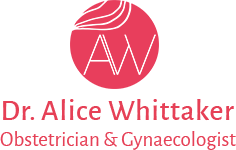What is Hirsutism and Menstrual Disorders?
Hirsutism is a condition characterized by the excessive growth of body or facial hair in women, much like hair growth patterns seen in men. The hair grows thick and dark on the face (resembling a moustache and beard), chest, back, upper arms, lower stomach, around the nipples and legs. Hirsutism may be related to menstrual disorders.
Menstrual disorders are a set of problems that affect a woman’s monthly menstrual cycle (monthly bleeding). They include no menstruation (amenorrhoea), light or irregular periods (oligomenorrhoea), heavy periods (menorrhagia) and painful periods (dysmenorrhoea).
Causes of Hirsutism and Menstrual Disorders
Hormones play an important role in regulating growth and other bodily functions. At the onset of puberty, a mixture of female and male sex hormones is produced for sexual maturity. An imbalance in these hormones or increased production of male hormones can lead to hirsutism (high levels of the male sex hormone androgen) and menstrual disorders. The recent increase in childhood and adolescent obesity is also a major factor that has led to a high incidence of hirsutism and menstrual disorders.
Causes of Menstrual Disorders
- Dysmenorrhea: may occur due to endometriosis (a chronic condition where the uterine lining grows over the ovaries and bladder) or fibroids (noncancerous growth on the walls of the uterus), cyst in the ovaries and the use of intrauterine contraceptive devices (IUDs).
- Menorrhagia: may be caused due to uterine fibroids, problems in ovulation (release of fully developed ovarian cells), endometriosis, uterine polyps (small benign growth), cancer, severe infection, miscarriage or ectopic pregnancy (pregnancy outside the womb), certain medications and IUDs.
- Oligomenorrhea: may develop due to polycystic ovary syndrome (ovarian cysts), weight loss, endometriosis, stress, and medications.
Causes of Hirsutism
- Polycystic ovary syndrome
- Cushing’s syndrome (high levels of cortisol, a steroid hormone)
- Congenital adrenal hyperplasia (an inherited condition characterized by abnormal levels of cortisol and androgen)
- A tumour (tumour in adrenal gland or ovaries)
- Certain medications
Symptoms of Menstrual Disorders and Hirsutism
Symptoms associated with menstrual disorders are:
- Irregular periods
- Lower back pain
- Sense of burning during urination
- Infertility (difficulty getting pregnant)
- Fever
- Abdominal cramps
- Unusual vaginal discharge
The symptoms of hirsutism include:
- Acne
- Balding
- Deepening voice
- Reduced breast size
- Enlargement of clitoris
Diagnosis of Menstrual Disorders and Hirsutism
Your doctor will collect your medical history to understand the reason behind your condition. You may be ordered blood tests to evaluate the variation in the levels of the hormone. A high level of the male hormone testosterone in the blood confirms hirsutism. An ultrasound examination or CT scan may be ordered to examine the presence of cysts, fibroids or tumours in your ovaries. Laparoscopic examination and biopsy may be performed to diagnose cancer.
Treatment for Menstrual Disorders and Hirsutism
Your doctor may prescribe hormone therapy or oral contraceptive pills to treat menstrual disorders and hirsutism. Surgical procedures may include the removal of fibroids, cysts or tumours. Surgery may be recommended only in cases of severe menstrual disorders. Other cosmetic procedures, such as electrolysis (mild current targeted at hair follicles) and laser therapy (laser beam targeted over the skin to destroy hair follicles), and temporary hair removal procedures (waxing, shaving, etc.) may help to control the excessive growth of hair.


